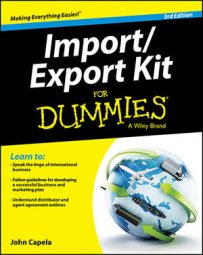As an exporter, you need to be aware of the U.S. Customs benefits that are available to you. These benefits are designed to encourage U.S. exporters by letting them exclude any duties paid on imported items from their sales prices.
Here's a rundown of the benefits you may be able to take advantage of:
Drawback of Customs duties: Drawback is a form of tax reduction in which duties collected on imported goods are refunded to the importer if these goods are exported from the United States. The refund is on all duties paid on the imported goods, less 1 percent to cover Customs costs.
Note: Drawback restricts the ability of NAFTA countries to provide export incentives, such as refunds of import duties, in connection with exports to other NAFTA countries. This restriction also impacts all other free trade agreements in place or to be negotiated in the future.
U.S. Foreign-Trade Zones (FTZs): FTZs are sites in the United States that are considered outside the United States for Customs purposes. As long as the goods remain in the FTZ, they aren't subject to payment of any Customs duties. While in the zone, the goods may or may not be processed; after the goods leave the zone, they're subject to duties. If the FTZ is used to process goods and your finished product is ultimately shipped to the U.S. market, the importer may have the option of paying the finished product duty rate rather than the component duty rate. (Many finished products have lower duty rates than their components or are duty-free.) If the goods are exported out of the country, no duty payments are required.
Check out this list of the contact information for each FTZ project. You can also get information on FTZs by calling 202-482-2862 or emailing [email protected].
Foreign free port and free trade zones: These are similar to the U.S. Foreign-Trade Zones (see the preceding bullet), but they're located in foreign countries, usually in or near seaports and airports. U.S. companies use these ports or zones for receiving shipments of goods that are reshipped in smaller lots to customers in the surrounding areas.
Bonded warehouses: These public warehouses, which are under the supervision of the U.S. Customs Service, are located in many different places around the U.S. Goods can be stored in them with no assessment of duties, but after the goods are released, they're subject to Customs duties.
The difference between a bonded warehouse and an FTZ is that bonded warehouses are simply used to store goods prior to exporting them, whereas goods can be stored and can undergo some manufacturing process in an FTZ.
Bonded warehouses are privately owned. For details on how they work, go to the U.S. Customs and Border Protection website.

